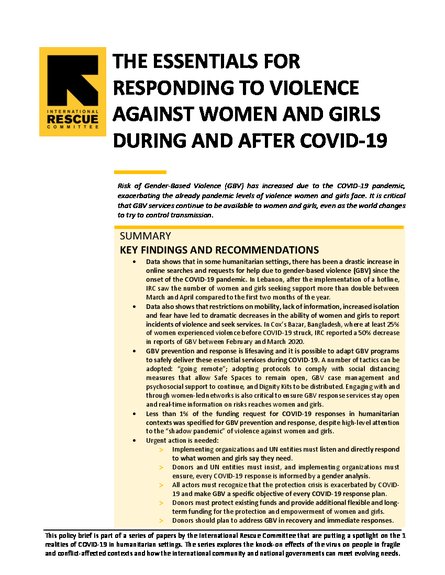
As the knock-on effects of the COVID-19 pandemic continue to be felt around the world, the suspension of essential protection services for women and girls, compounded by restrictions on mobility, lack of information, and increased isolation and fear, have resulted in increased challenges for women and girls accessing life-saving gender-based violence (GBV) services. Experts warn that an additional 15 million cases of gender-based violence (GBV) will occur every three months that the lockdown continues, and the UN Secretary General has called for the “shadow pandemic” of GBV to be prioritized in the COVID-19 response. Despite this, less than 1% of the 6.71 billion USD requested through the Global Humanitarian Response Plan in May 2020 was requested for GBV- specific programming. As of 22 June 2020, a mere 8% of the request for GBV programming had been met.
Despite new challenges, it is still possible to deliver quality GBV services during the COVID-19 pandemic. GBV response services must be recognized and funded as essential in all preparedness and response plans as part of lifesaving care and support.
To ensure COVID-19 mitigation efforts are safe and appropriate, women should be consulted with and included as decision-makers in all response plans and activities, and gender analysis should be included across all sector planning. Women must have a seat at the table to ensure communication about the pandemic and personal safety measures reach women and girls; that women and girls can still access all services, from food distributions to healthcare, and how program adaptation measures can continue to provide lifesaving GBV response services.